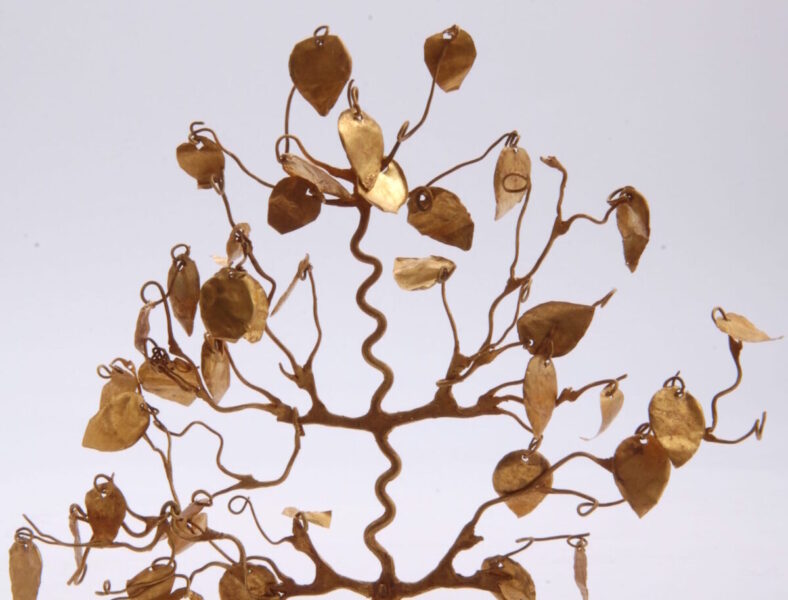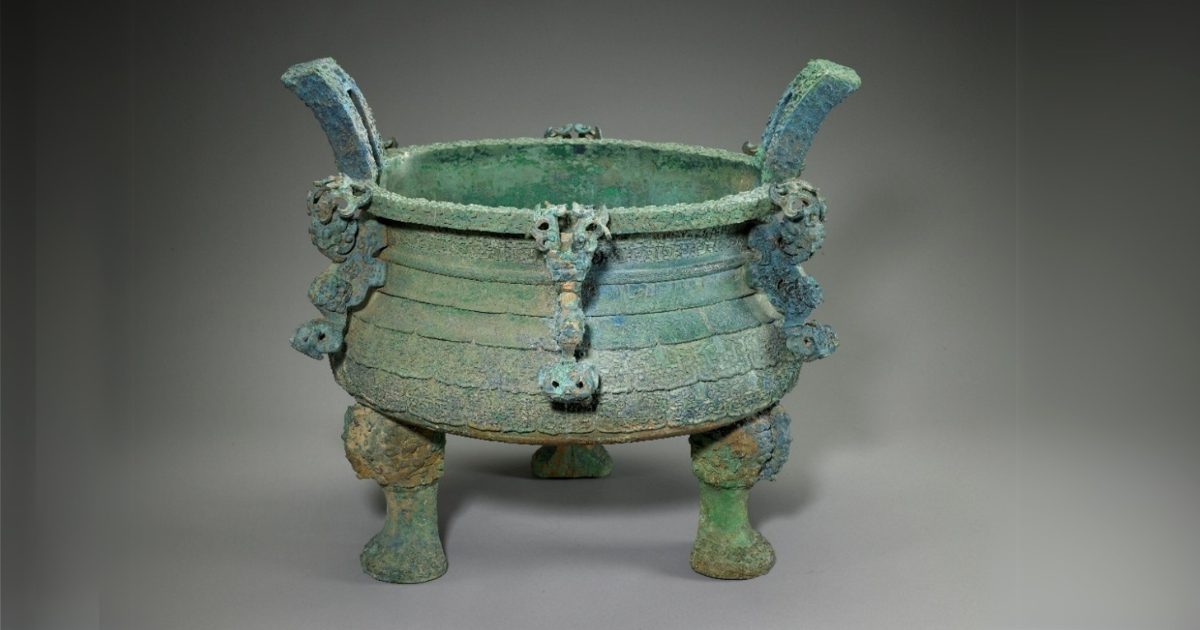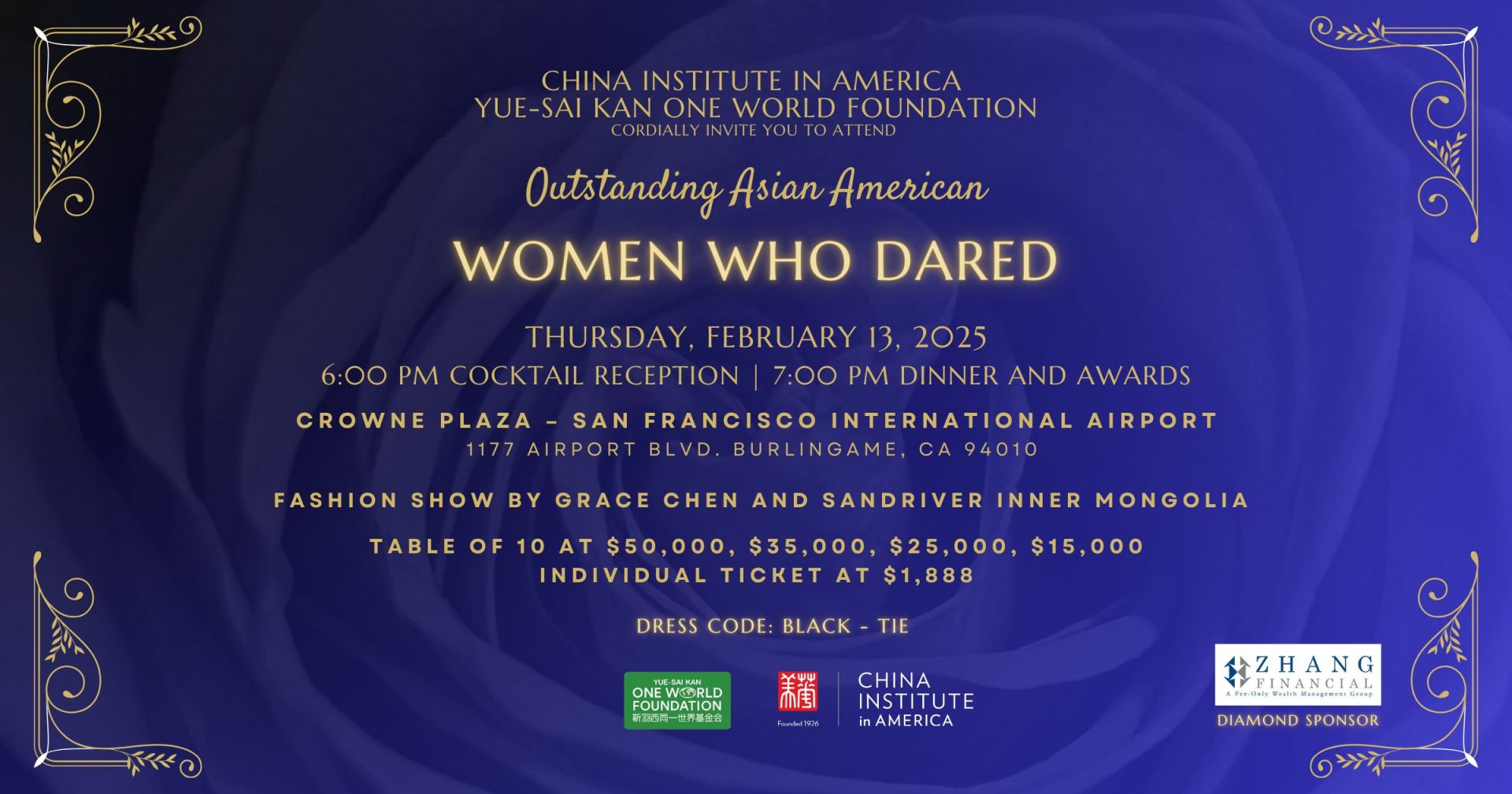For Immediate Release
NEW YORK—Treasures from nearly 70 years of archeological excavations in China will be revealed in a landmark exhibition at China Institute Gallery this fall. Gold from Dragon City: Masterpieces of Three Yan from Liaoning, 337–436 will present artworks and cultural objects on view for the first time in the United States from September 5, 2024 through January 5, 2025. The exhibition features sculptures, bronze mirrors, inkstones, imperial seals, equestrian objects, and ceramic vessels, as well as jewelry and ornaments, many made of gold. The unearthed archeological discoveries are from “Dragon City,” now present-day Chaoyang in Liaoning Province. A fully illustrated catalogue will accompany the exhibition.
Gold from Dragon City illustrates the remarkable history of ethnic integration and cultural exchange along the Silk Road that transformed northern China more than 1,600 years ago. The archaeological objects in the exhibition have provided revelations surrounding how the Three Yan culture, established by the Murong Xianbei people, progressed from nomadic to an advanced agricultural society. In the process, they were influenced by the Eastern Jin dynasty and gained literacy, and their work in making objects had a profound impact on later developments in gold craftsmanship and cavalry.
The exhibition is jointly organized by China Institute Gallery and the Liaoning Provincial Museum. Willow Weilan Hai, Senior Vice President of China Institute in America and Director and Chief Curator of China Institute Gallery, directed and executed the exhibition. It was curated by Dr. Liu Ning, Deputy Director of Liaoning Provincial Museum, with assistance from the Liaoning Provincial Institute of Cultural Relics and Archaeology and the Chaoyang County Museum. The exhibition is presented in four sections: Diversified Three Yan Culture; Mural Art of Three Yan; Gold Art of Three Yan; and Equestrian Art of Three Yan.
“This extraordinary exhibition illustrates the remarkable achievements of the Three Yan civilization, which is now no longer lost to history. We have gained a deeper understanding of how ethnic integration and the cultural exchange of East and West inspired and enriched cultures along the Silk Road,” said Willow Weilan Hai. “Just as in today’s world, cultural exchange serves as the most important bridge to promoting mutual understanding and progress. Over my three decades of organizing exhibitions at China Institute Gallery, I have sought to present an exhibition that illustrates this crucial theme and am so pleased to present it now.”
Exhibition Highlights
Among the highlights in the exhibition are a series of headdress ornaments with shimmering and swaying leaves of gold worn by the Murong Xianbei. The gold buyao, meaning step and sway, quivers with movement when the wearer takes a step. The metal leaf decoration originated in Western Asia and was introduced to the northern regions via the Silk Road, spreading in the western Liaoning area and becoming a prominent feature of Three Yan culture.
An enchanting bronze vessel in the shape of a tiger was excavated from a tomb belonging to Feng Sufu (d. 415), the imperial minister of Northern Yan. The tiger, with an elevated head and raised tail, has intricate cast patterns depicting the animal’s fur and may have functioned as a drinking vessel or container. This rare find showcases the cultural amalgamation of North and South.
Also found in Feng Sufu’s tomb was an imperial gold seal with a tortoise-shaped knob. Seals were used with vermilion paste to impress the owner’s name, studio name, or official title on documents or works of art. On each side of the tortoise’s shell there are interconnected circles symbolizing constellations.
A clay sculpture of a meditating Buddha has a prominent ushnisha, a cranial protuberance indicating wisdom, and an urna, another symbol of wisdom, between the eyebrows. Most surviving Buddhist statues are stone. Because of the fragility of clay, rustically made sculptures like this are relatively rare. The Buddha statuette is dated to the Northern Wei (386–535) and was excavated in 2003 from Chaoyang, Liaoning Province.
The exhibition also features the earliest known stirrups in human history, which revolutionized cavalry and warfare. With two feet in the stirrups, early warriors could have both hands free for battles. The stirrups are made of exquisitely crafted mulberry wood and gilt-bronze and represent one of the masterpieces of gilded craftsmanship from the Northern Yan during the Sixteen Kingdoms period, also unearthed from the tomb of Feng Sufu. Their appearance changed the history of cavalry: “When we think of medieval Europe, we think of knights in armor carrying heavy lances and riding on horseback, but that would have been impossible without stirrups, for such heavily weighted riders would have fallen off too easily. It was the Chinese invention of the stirrup which made Western medieval knights possible, and gave us the age of chivalry,” wrote historian Robert Temple in The Genius of China: 3,000 Years of Science, Discovery, and Invention (Inner Traditions, 2007).
The power of the Silk Road is further illustrated in the discovery of five glass vessels found in 1965, which represent the earliest and largest corpus of glassware unearthed in China to date. They were all produced through free-form blowing and are made of sodium carbonate glass, classifiable as of Roman origin. It is highly likely that these glass vessels were brought from the northeastern provinces of the Roman Empire into Northern Yan along the Silk Road, a journey of nearly 5,000 miles.
press preview
A press preview for Gold from Dragon City: Masterpieces of Three Yan from Liaoning, 337–436 will be held on Wednesday, September 4, from 10 a.m. to 12 noon. Light refreshments will be served. To RSVP, please email Margery Newman at [email protected].
About China Institute in America
Founded in New York City in 1926 by American educators John Dewey, Paul Monroe, and Chinese scholars Hu Shi and Kuo Ping-Wen, China Institute in America is an internationally renowned U.S. nonprofit organization dedicated to deepening the world’s understanding of China through programs in art, business, cuisine, culture, and education.
About China Institute Gallery
China Institute Gallery is renowned for its intimate, first-class thematic exhibitions, which are accompanied by in-depth scholarly catalogues. Since 1966, the Gallery has presented more than 100 exhibitions across all art forms including calligraphy, painting, ceramics, bronzes, jades, decorative art, folk art, architecture, photography, textiles, and contemporary art. Covering 5,000 years of Chinese history from the Neolithic period to present day, China Institute Gallery is the only non-commercial exhibition space solely dedicated to Chinese art in New York and the United States. The Gallery’s commitment to education through catalogues and art programming makes Chinese art available to audiences far beyond the Gallery’s doors. China Institute Gallery has collaborated with numerous Chinese museums. These exhibitions have showcased rarely seen collections from provincial and municipal museums in China, presenting cultural treasures as well as newly excavated artifacts to illuminate China’s rich cultural history.
China Institute in America is located at 100 Washington Street, New York, NY 10006. To learn more, please visit chinainstitute.org, LinkedIn or Instagram.
###
Image credit: Hat ornament. Sixteen Kingdoms, Former Yan (337–70). Gold; Base: H. 5 cm, W. 4.6–4.8 cm; Branches, W. 13.7 cm, L. 17.8 cm with remaining 35 leafs. Excavated in 1989 from tomb No. 2 of Tiancaogou, Xiyingzixiang, Chaoyang. Liaoning Provincial Institute of Cultural Relics and Archaeology.
High resolution images available upon request.
Press Contact:
Nicole Straus Public Relations
Nicole Straus, 917-744-1040, [email protected]
Kristin Guiter, 917-635-1805, [email protected]



